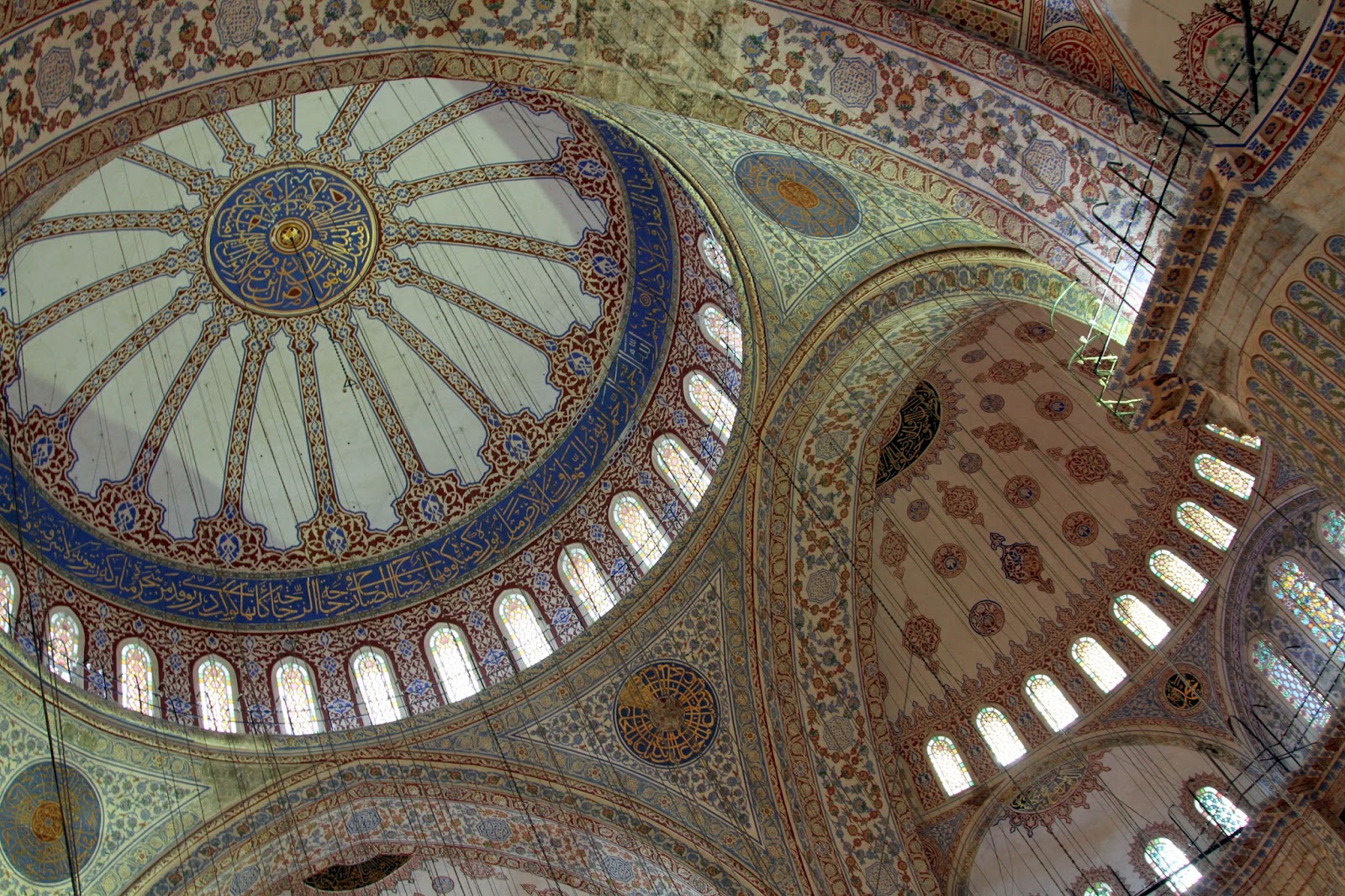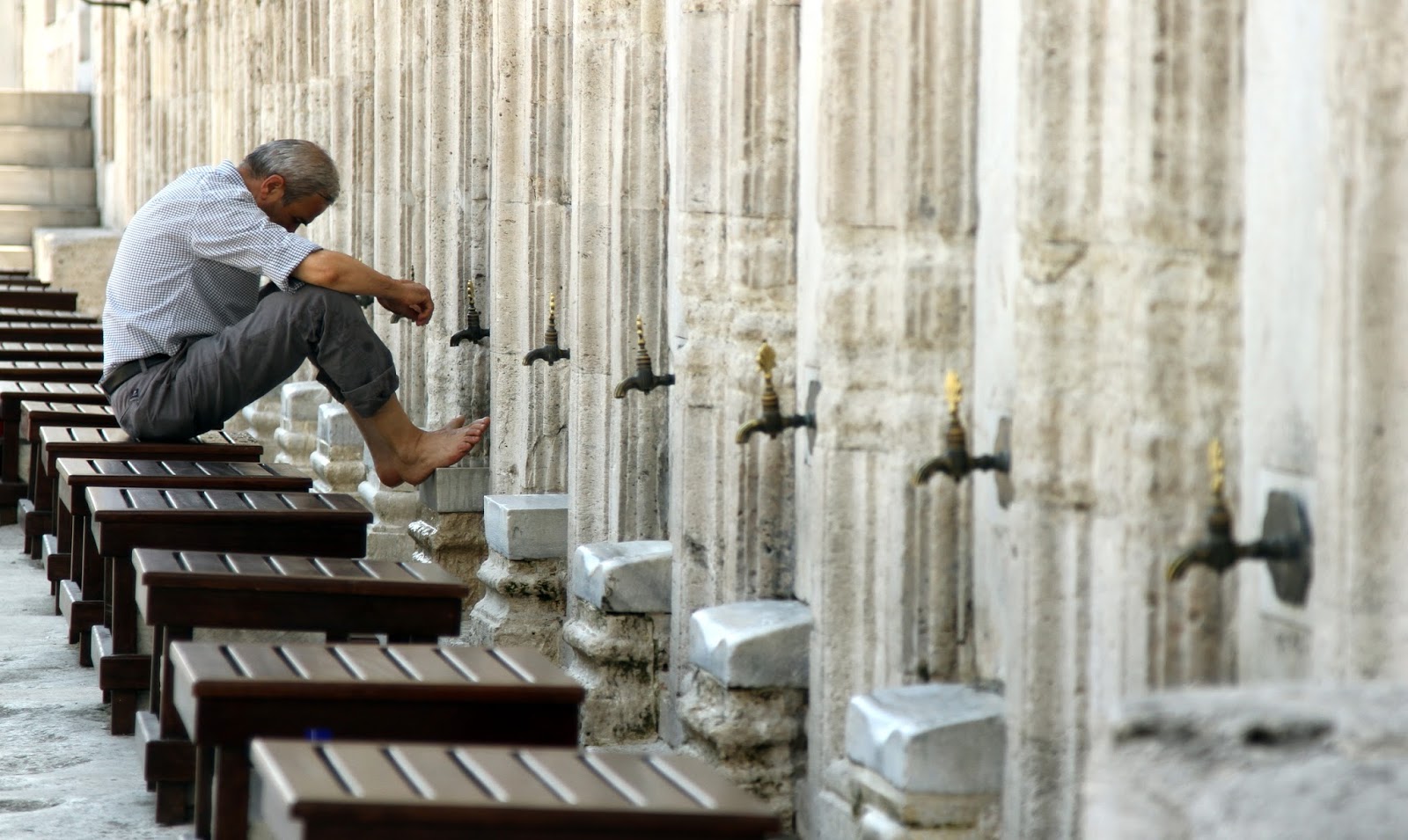The most famous mosque in Istanbul is the Sultan Ahmet Mosque, sitting across a landscaped park opposite the Aya Sofya. It was completed in the 1600’s (again, building it took only 8 years!) and is recognised by its six minarets. The story goes that traditionally a sultan’s mosque had four minarets, but Sultan Ahmet ordered six 210-foot high minarets. That led to accusations of sacrilege, since only Islam’s holiest mosque in Mecca had six. To avoid any scandal the Sultan agreed to pay for the addition of a seventh minaret in Mecca.
We entered the mosque on a Friday just as the worshippers left, and entered the very crowded courtyard. The perfectly symmetrical curved domes of the building was a beautiful sight and I wished for a wide-angle lens :-)! Inside the interior is covered with predominantly blue tile work from the town Iznik, giving the mosque its nickname, the Blue Mosque.
Even though this is the most visited and well known mosque in the city, it turned out not to be the most special one we went to, probably because it sits smack in the middle of the Hippodrome / Aya Sofya / Topkapi complex, where it almost seems like the exception to spot a local amongst the tourists. It was the largest of Istanbul’s mosques that turned out to be my favourite. The imposing Süleymaniye Mosque, commissioned by Sultan Süleyman the Magnificent was competed in 1557. The mosque sits high on a hill with a commanding view of the Golden Horn and beyond. This one, closer to the university and with its working annexes (a madrassa and a hospital amongst others) gave much more of a feel for the way its designers intended it to be in atmosphere. We sat down on the red carpet for a bit, glad to escape the hordes of crowds in the Blue Mosque and spend time learning about the symbolism and the history of what, to us, is an unknown architectural form.
Visiting these mosques, each of which shared the same elements – oriented towards Mecca, with its minarets for the call to prayer, the minbar and the mihrab – it struck us that each of them also speaks of history, power, politics. The tiles used were symbols of wealth, the size of the dome was an overt effort by the Sultan to comply with the religious requirements while getting as close as his treasury allowed to the dimensions of the Aya Sofya and the number of minarets could cause serious international scandal. A bit like the cathedrals in Europe, actually, just framed for a different context. It reminded us of how history repeats itself and how human nature is shared across barriers of religion and culture.
To see all the Turkey blog posts, click here.













No comments:
Post a Comment